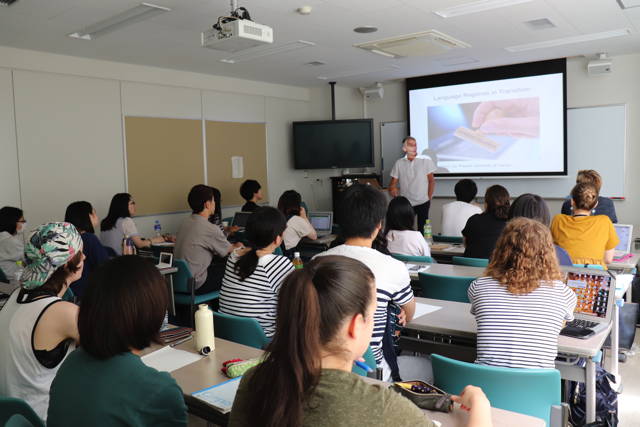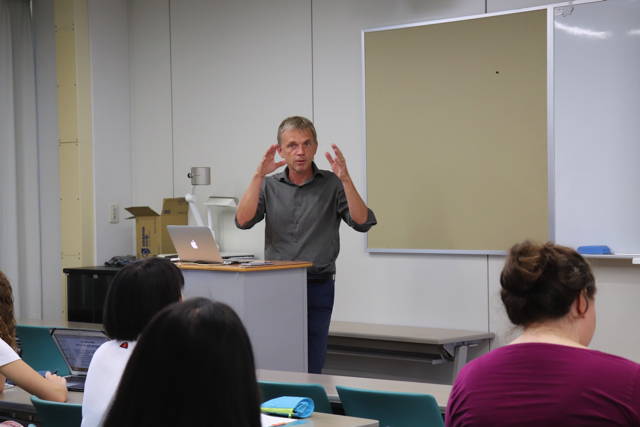Japanese version of this article
The course “Sociology of Language, Language and Wellbeing in Japan” was held as one class for Hokkaido Summer Institute 2018. The course lasted for 4 days, and was held from August 6th to the 9th.
There were 11 Japanese students participating in the course in addition to the 18 foreign students of varying nationalities. This gave the class a distinctly international feeling.
Professor Patrick Heinrich of the University of Venice, an expert of Japan’s languages and a leader in the field of sociolinguistics, was invited to lecture this year alongside Professor Carola Hommerich of the Hokkaido University Faculty of Letter’s own Sociology department. This was the third year that this course has been held.
The class dealt with both the problem of language as well as the social phenomena that are related to it. Classes proceeded by effectively mixing lectures focused on the role of language in Japan’s modernization process – complete with plenty of examples to help students understand – with discussions on specific topics. A rich array of topics were looked at in the course: changes in Japanese language that occurred over the course of modernization, national language policy in Japan, the plurality of language, standard Japanese and dialects, changes occurring from internationalization and inter-cultural exchange, Ainu language, Ryukyuan language, language and the economy, and linguistic landscapes.
Professor Heinrich uses a wide-array of examples while enthusiastically lecturing on a wide array of topics related to language and society.
The class felt very relaxed, as plenty of examples were given during lectures (with the occasional joke added in as well). Students responded well to this relaxed atmosphere, and were enthusiastic when participating in the very active class discussions that were held after each topic ended.
On the afternoon of the third day, students went to Sapporo station to find examples to help understand the topic of “linguistic landscapes.” In order to do so, students went around Sapporo station looking at examples of items written in foreign languages, like billboards, advertisements, and maps before considering the characteristics and goals of each example.
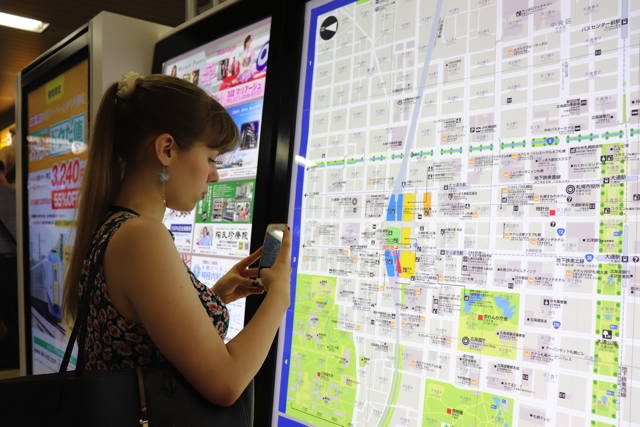 Using a smartphone in order to find various examples
Using a smartphone in order to find various examples
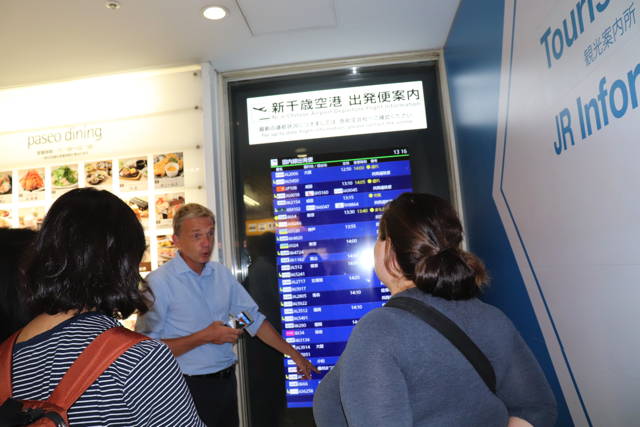 The electronic signs that display the times for departing flights from Shin Chitose Airport alternate between English and Japanese. Beneath this image, a QR code that shows the airline company’s contact information is displayed
The electronic signs that display the times for departing flights from Shin Chitose Airport alternate between English and Japanese. Beneath this image, a QR code that shows the airline company’s contact information is displayed
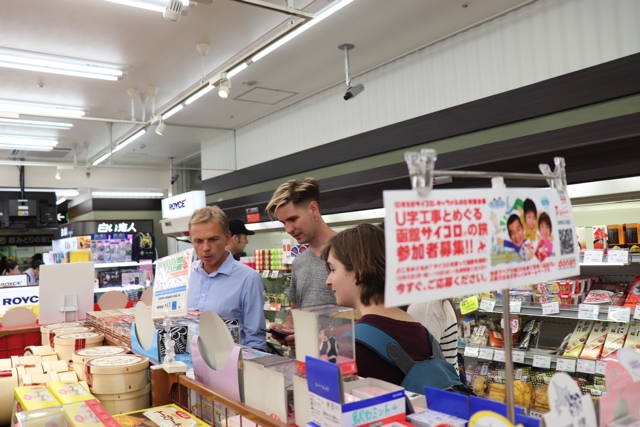 Professor Heinrich discusses the product display at a gift shop with the students
Professor Heinrich discusses the product display at a gift shop with the students
The next day, students provided the examples of linguistic landscapes that they had found and shared their thoughts on their discoveries. Students then discussed the content of these presentations.
We received many positive comments from students about this course: “The broad themes, passionate instructors, good atmosphere, and active participants helped make this the best course that I have had so far in this semester.” “It was fun grouping up with other students to find examples of signs in Sapporo station.” “To be able to share ideas and experiences with other students of many different nationalities was an incredibly valuable experience for me.” “The many discussions held after each topic were good.” “The numerous examples used in class helped me to understand difficult concepts.”



